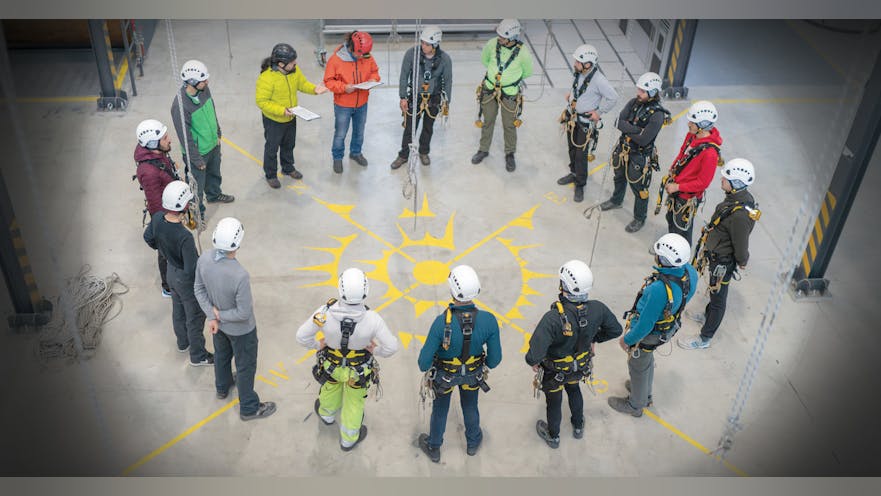Safety leaders have had to wear a lot of hats (and not just of the hard-hat variety) for many years, and there’s not even a common description that encompasses all they do. We know this for a fact, because when we asked respondents to EHS Today’s 2019 National Safety Survey for their job titles, we got almost as many different answers as we had participants in the survey. While “safety manager,” “EHS manager” and “safety director” (or variations thereof) were the most frequently mentioned, there were literally hundreds of unique job titles out of the 1,507 responses we received, running the gamut from “regional fire & life safety officer” to “senior risk control consultant” to “principal regulatory compliance specialist” to “ergonomist” to “president.”
And what do these safety leaders actually do? We asked them what areas they are personally responsible for managing, and while just about everybody (93%) said “safety,” there were a lot of other areas they’re involved in as well. Occupational health and risk management are both areas where at least two-thirds of the respondents are responsible. And at least half are involved in things like emergency management, ergonomics, environmental compliance and industrial hygiene. And many wear a human resources hat as well as a safety hat, as they’re responsible for workers compensation, and the rise in popularity in wellness programs often ends up on the safety manager’s to-do list.
We also found a lot of “analyst” and “technician” titles among the respondents, and that comes as no surprise, considering the safety profession’s transition into a more tech-focused profession. It’s inevitable that as the manufacturing and distribution industries increasingly are turning to automation and robotics to produce and transport goods and services, safety professionals are being tasked with not only keeping their workforces safe in these faster-paced, high-tech environments, but to become more knowledgeable themselves about these new technologies, and how they can be used to enhance and promote safety.
And when it comes to tech trends in EHS, one of the most prominent these days is the use of software to track, manage, analyze and report safety data. Forty-four percent of respondents say they’re using analytics to report data about facility safety performance, and another 14% are planning to use these types of solutions in the near future. Some typical comments from respondents include the following:
“We use data to support ongoing safety improvements and focus on prioritizing our capital requests for expenditures.”
“Running comparisons and data tracking allows employees in the field to identify and report unsafe actions and injuries.”
“We have created a safety heat map to track safety indicators on an overlay of our facility drawings. The data includes incidents, hazards, PPE and certification areas. We’d like to provide this through augmented reality so anyone entering an area can quickly use the data to reduce the risk of injury.”
“Life gets more complicated each year. The demands to analyze data, identify risk and develop plans for improvement continue to steadily increase. The speed at which things change now is astonishing. You ride the crest of the wave or you are consumed by it.”
Getting Paid, Getting Satisfaction
With input from more than 1,500 EHS professionals, we’re able to put together a composite picture of what a “typical safety leader” looks like. For instance, this person is a white male in his 50s, living in the Midwest with more than 20 years of experience, working in a light manufacturing plant or facility, and earning $84,500 (median annual base salary). He received a salary increase in 2019 between 1-3%, and expects the same pay increase in 2020.
What’s more, safety leaders as a whole are satisfied with their jobs and their career paths: 79% say they are either “very satisfied” or “satisfied” with their current positions, and 82% say they are either “very satisfied” or “satisfied” with the EHS profession as a career path. That doesn’t mean, of course, that things couldn’t get any better, as witness some typical comments:
“There is not enough funding given to our department, no opportunities for advancement or raises, and EHS is only important when something happens.”
“The current regulatory environment makes it harder to justify addressing some issues since management knows that regulations are being pulled back.”
“Engagement and involvement from the younger safety professionals seem to be lacking. In the next 10 years there will be a lot of safety professionals retiring. Will the next generation of safety professionals be ready? Why do so many companies still fail to truly develop a strong safety culture?”
Helping companies develop a strong safety culture is, of course, what EHS Today is all about, and our thanks to everyone who took the time to participate in the 2019 National Safety Survey, and for giving us an up-close look into the challenges, opportunities and best practices that drive you on to keeping your workers and workplace safe.
The charts on the following pages will take you on a deeper dive into the results from the survey.
